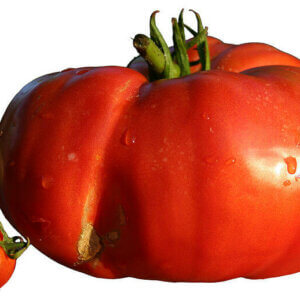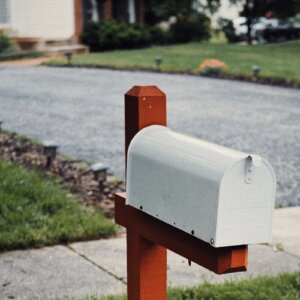Most of us were raised on flush toilets. You go in the bathroom, do what you’ve got to do, and then the press of a shiny lever flushes all your unpleasantries into oblivion, never to be thought of again. But that modern luxury — and it is a luxury — is something that many of us see as not worth the damage it wreaks on our environment and water supply, or the fertility it steals from our land.
Many people are deciding to shirk the wasteful ways of the water closet and reclaim responsibility for their own waste … enter the composting toilet.
This ancient and modern method of handling waste makes it anything but waste. Rather than flushing it away to become some chemicalized water quality nightmare, composting toilets recycle the nutrients in human waste, and turn it into safe and incredibly useful soil fertility.
Related Post: How To Make Compost Tea
And since they are off-grid, they are ideal for the RV, barn, tiny home, homestead, and any household that is wise enough to punt their water-wasting flush toilet to the curb (or turn it into a hillbilly-style planter to horrify your neighbors) and embrace a new way of living.
5 DIY Composting Toilet Plans
You could buy a composting toilet system, of course, but these will run you a lot of money. Like a staggering amount. Many of the manufactured composting toilets that I’ve seen online are well over $1,000. Considering you can accomplish the same goal of closing the nutrient cycle with a $3 bucket, let’s forget the 4-figure waterless thrones, and do our dooty duty DIY-style!
Idea #1: The Bucket Basic Is Ugly, But Quick And Cheap!
If you’re not worried about winning any style points and just want to get your system started, you can have a DIY composting toilet ready in the span of a single afternoon. Every bucket-based DIY composting toilet design is based on the following materials but clothed differently for different tastes.

Materials Needed:
- Snap-on Toilet Seat (like the Luggable Loo)
- Four 5-Gallon Buckets
- Bucket for Bulk Material
- Stand for 5-gallon bucket
You’ll want four buckets because you always need to have standbys for switching out. Plan on having at least four buckets for every toilet you use. As for the frame, it’s optional, but it provides stability and can easily be built out of scrap wood.
Just snap the lid on a bucket, throw in the first layer of bulk material, and DONE. You are ready to (literally) go.
Idea #2: Fancier Bucket-In-A-Box
Most people who DIY their own composting toilet go for a variation of this design. Even if you’re not confident in your carpentry skills, you can manage to create the simple plywood box that is the basis of this design.
If you are a little more aesthetically inclined, however, you can really make this a comfortable and beautiful piece in your waste-free bathroom.
- Here’s the Humanure Handbook’s basic design.
- Build along with this homeowner as he makes a toilet that fits in his bathroom like it’s always been there.
- This self-proclaimed compost junkie employed a judicious use of rich-looking varnish to make a toilet that you wouldn’t feel too silly calling beautiful.
Idea #3: Repurposed Medical Seat
I find this design particularly unpleasant, but if you are a recycler with an eye for function over form, this is a very easy method of getting a system started. Maybe you could paint the thing some funky colors to make it seem a little less medical?
Idea #4: The Artsy Fartsy DIY Composting Toilet!
There’s no reason the bathroom needs to be a poop dungeon. Bringing a touch of beauty and color into the space will make using it a positively peaceful and productive experience of elimination!
The following designs are not all bucket-based composting toilets, but if you’re a bit handy with the hand tools and paintbrush, you can easily take inspiration from these folks and design your own style of composting creativity.
- Since there is no water used in a DIY composting toilet system, and no need for harsh cleaning chemicals, you can really get into decorating the materials surrounding it. I totally dig this swirly-painted throne!
- Though this is a different system than the DIY composting toilet bucket, the mosaic pieced around this outdoor earth toilet is both inviting and unique. And that woven shelter looks so airy and clean.
- This DIY composting toilet uses tiles to make an easy-to-clean and easy-on-the-eyes presentation for your pooping pleasure.
Idea #5: The Elegant Hardwood
One of the more simple-yet-beautiful DIY composting toilets I’ve seen in person was in a tiny cabin, built of hardwood. If you check it out in their video below, Doug and Stacy’s bathroom has a rustic, yet airy-feeling, featuring wooden seats and a hardwood motif around the entire bathroom.
As a side note, if you want to see what composting toilets look like in a real-life situation, this couple has posted numerous helpful videos on their YouTube channel, and they’re worth the look!
You can see a similar design here in this tiny home. As you will see, it doesn’t take much to make a composting toilet seem like a naturally elegant addition to a natural lifestyle.
Composting Toilet Basics
As you get your composting toilet in place and get ready to make the switch, you need to educate yourself on how to use them properly. Though the actual act of going to the bathroom will be unchanged, your mindless flushing will be replaced with the responsibility of managing the compost-in-the-making. Relearning this daily activity may take a bit of adjustment, but it works.

The Humanure Handbook (available to read for free online!) is the go-to resource that covers all this material in much greater detail, but I’ll give you the CliffsNotes version of composting toilet use to get you familiar.
Author’s note: This portion of the article is NOT ENOUGH to get you started. You really need to at least read through the abbreviated version of the Humanure Handbook to get a sense of how to properly and safely manage this system.
Applying Cover Material
First, you need to establish a good supply of cover material — also sometimes referred to as “bulk material.” This is the carbon-rich stuff used to help control odors and flies and to provide a matrix for decomposition. A surprising amount of materials can be used including shredded junk mail, grass, straw, and even old cotton or wool.
Related Post: Worm Bin Essentials: Getting Started with Vermiculture
Sawdust is often recommended (make sure it is UNTREATED sawdust), but you may find that leaves are most effective in controlling odors. Also, unless you have a sawmill, locating enough sawdust may require a drive. But if you have trees, you have free material for the taking as near as three steps out your door.

I recommend collecting them in the fall for use throughout the year, and whatever you don’t use by the next fall can go straight on the garden as mulch. Some people recommend buying coconut coir or peat moss from your garden supply store. If you want to waste money, it is convenient enough, I guess, but I can’t justify that when there are leaves everywhere.
The DIY composting toilet will not smell if you have used enough bulk material. If it does smell, you haven’t used enough. It’s as simple as that. Every time you poop, be sure to cover it with a layer of bulk material (cats really know what they’re doing). Make it a firm house rule: No exposed poo, ever!
Managing The Waste
You can mix urine and poop in a DIY composting toilet. Moisture is absolutely necessary for decomposition. You could also separate them which will make switching out the buckets a lot more manageable, and give you another resource for enriching your garden. Check this link for tons of resources on using pee innovatively.
Urine-diversion can be as complicated as building a urine-diverter into the toilet, or as DIY-simple as having a collecting cup and watering can at the ready beside the toilet (be sure to distribute the urine soon, however, as it will smell really bad if stored). If you remove all urine from your composting system, you’ll have to water the compost pile regularly to keep it wet. This is a great use of greywater, if you have the system set up for it.
Toilet paper is totally safe for a DIY composting toilet. It will break down easily. Food scraps can also join the party, even the ones usually banned from the compost pile like bones (be sure you make broth with them first).
Emptying Your DIY Composting Toilet
The DIY composting toilet needs to be emptied when it is full. What “full” looks like is up to you and how much weight you can lift. Just be sure to make this a regular part of your chores. No one wants to be the one who needs to use the bathroom and finds a near-to-brimming bucket. As I mentioned earlier, make sure you have at least three additional, rinsed-out buckets on hand at all times and stored nearby outside. This will allow you to quickly switch out buckets whenever needed.
Make Sure You Have A Solid Compost Bin
The second most important part of a DIY composting toilet is the composting part. The compost bin can take many different forms, but it must be built and maintained in a specific fashion to facilitate proper composting, lack of leaching, and healthy environments for those using it. Don’t wing this step of the system. Read up on it and build it properly.
Using Your Compost
The third (or maybe this one is actually first) most important part of the DIY composting toilet system is actually using the compost!
If you are concerned with restoring the vitality of your gardens over the long-term, utilizing every bit of nutrient richness that your land produces means considering yourself to be a key part of the nutrient cycle.
There’s a lot more nuance to this process, but I leave that to you and your future research. Soon enough, you’ll have found that composting your waste will fall into a “new normal” pattern of your life, and you’ll forget that you ever depended on a mindless flush.
Editor’s Note: Before using your compost in your garden beds, do the research to decide what is best for your family and homestead. Make sure that you’re maintaining a safe distance from your neighbors, and that you’ve taken the proper precautions to avoid soil leaching. Check out our resources at the end of this article for more in-depth guidance for using humanure properly.
Why This Is A Good Idea
Though I wish that everyone would make the switch to composting toilets, I know that a case needs to be made for why we should abandon centuries of public services in favor of pooping in a bucket. After all, even the Ancient Romans had public toilets and sewers, so why can’t we?
I understand that not everyone has the space or physical ability to create this system on their own land, especially if you live in the city. But if you do have the desire to heal your patch of land, this change is a fantastic way to reclaim some nutrients and off-grid independence.
And you don’t need to take my word for it. If you would like to educate yourself on the problems with our modern sewage system, or if some members of your family need convincing before starting this ambitious project, I offer these three excellent documentaries:
- Vice: You Don’t Know Shit (It’s a Vice documentary, so you can obviously expect some profanity, but it’s a horribly fascinating look at what happens to New York’s sewage)
- Crapshoot: The Gamble With Our Wastes
- Biosludged
They challenge the notion that our modern system is safe, sustainable, or possible over the long term (spoiler alert: it’s not).
Resources
- The Humanure Handbook, Joseph Jenkins
- Humanure Part 2: Dealing With It, The Permaculture Research Institute
- Is It Safe To Use Compost Made From Treated Human Waste?, NPR
- Humanure: The End Of Sewage As We Know It?, The Guardian
Do any of you use a DIY composting toilet system? Would you ever consider making the switch on your own homestead? Let me know in the comments below!










































I have been thinking about building a composting toilet for my own use but I live in a small town. I plan to use sawdust from my cat litter because my cat uses pellets (Horse Bedding) instead of regular cat litter. When my cat peas the pellets turn into sawdust. There is no smell so I thought that that would make a good coverup for the composting toilet. What do you think? Does this sound like a good idea? Let me know. Thanks.
If you decide to use that for your composting toilet, make sure you include some liquids/urine in the mix so that you can make full use of the pellets’ nature. The only thing that would give me pause, aside from the cost, is if it is pine sawdust–that could possibly make the compost slightly more acidic, making it ideal for certain plants like chestnut trees or blueberry bushes, but less ideal for others.
Hope that helps! And good for you for giving it a try–I think you’ll be pleasantly surprised! Let us know how it goes.
Have you heard of an anaerobic digestion system? You are able to break down manure, food waste, and any organic waste and turn it into liquid fertilizer and biogas that you can use for cooking! You can also even get filtered water out of it with the correct filters. Lots of DIY videos on YouTube! I’m working on developing a packaged and affordable anaerobic digester that can be used for all of the above and am trying to gauge how interested people would be in such a technology. I myself am very interested in off-grid homes and hope to have one myself in the near future!
That’s interesting – I have heard of bokashi which I believe is anaerobic but I haven’t heard of anyone using it for personal waste…
Thanks for your comment, Enid–
I may have heard about this during our many research forays into off-grid life before we started our journey, but only in terms of huge city systems, not personal domestic ones. It does seem super-interesting! I can imagine a lot of folks in the prepper/offgrid/permie community would be curious to know more. With the systems we already have in place, we probably wouldn’t use it on our homestead–but our personal philosophy is that we need to be able to build/fabricate/fix everything ourselves, if at all possible. A neat idea to add to the conversation, though, and I hope you have an excellent adventure of your own and get that off-grid home soon!
I think this is what you want?
https://www.homebiogas.com/Products/HomeBiogas_Toilet
I’m planning a DIY van build and considering toilet options. There is a lot out there about the benefits of Nature’s Head ($$$$) and I like the idea of compost. I’m not understanding the benefit/purpose of separating vs combining pee & poo. Why go to the extra effort if all-for-one works better than the divide-and-conquer? Or, perhaps maybe it’s not better? I’d like to understand.
Thanks in advance.
Excellent question, Larry! The answer really depends on what you plan to do with the contents of the bucket. Urine is a great fertilizer, is sterile (at first) and it can be used fresh/unfermented. Many of those who divert urine do so because they are applying it to plants. The solids in the bucket need to be composted for 2 years or so before being used as fertilizer. The book Liquid Gold ( http://www.liquidgoldbook.com/ ) is a great resource on how to do this. It obviously requires a more complicated setup.
Of course, the solids DO need moisture in order to break down, so leaving all the waste combined solves that problem without fuss. It’s a much more simple, straightforward build and setup. It does make the bucket much heavier and sloshier to move–I imagine that’s an important consideration in a van.
So there are advantages to both choices. I hope that helps you figure out what’s best for you!
Great writing from grammatical, informational, and esthetic standpoints. Some other articles on the subject are self-contradictory, full of grammatical errors, lacking information or “padded” with reiterations of the same, and lacking personality.
Whereas those other articles distract the reader (at least, me) and make it a chore to read on, your passionate, clever, and personable banter invites one to read on. Who doesn’t like to be entertained while learning? I suppose it makes it more effective. Thank you for the content and resources. Excellent.